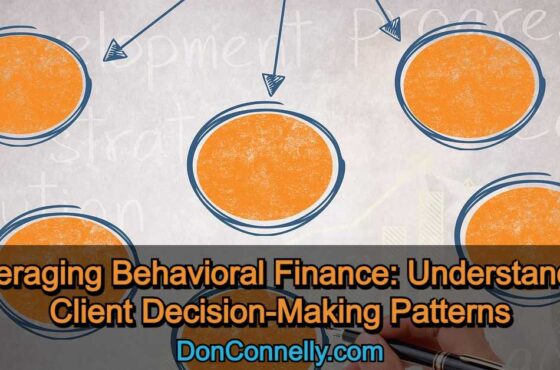How to Create a Systematic Communications Strategy
 By now you should know the importance of staying engaged with your clients. Clients who feel less engaged are less likely to trust their advisor relationship and more likely to bolt when things go south, if not before. At a minimum, they will feel less inclined to recommend you to others. Suddenly, it’s as if you’re spinning desperately on a hamster wheel with little hope of getting off.
By now you should know the importance of staying engaged with your clients. Clients who feel less engaged are less likely to trust their advisor relationship and more likely to bolt when things go south, if not before. At a minimum, they will feel less inclined to recommend you to others. Suddenly, it’s as if you’re spinning desperately on a hamster wheel with little hope of getting off.
Most advisors would agree that having a systematic communications strategy is essential for adding and retaining clients. The challenge for many is how to go about it. The exact tools and methods an advisor would use could vary greatly depending on their communication preferences, prospecting methods, and available time and resources. Here are a few steps to get you started.
#1. Create a communications framework
It becomes easier to create the essential components of a communications strategy if you build it around a simple framework that highlights the type of communications you need to create. Working off of a framework can help advisors take a process-oriented approach to see how they can leverage existing practices and then focus on one or two new ones they may want to incorporate.
The YCharts Advisor-Client Communication Report suggests such a framework based on the various communication styles advisors might use in different situations. The goal is to create a systematic approach to staying top of mind by creating value-add communications through different touchpoints.
- Broadcast/Scheduled: These are communications sent on a scheduled basis to all clients and prospects, such as a quarterly newsletter, a monthly blog post, or a regularly scheduled email that includes an advisor’s perspectives on the market or the economy.
- Broadcast/Ad Hoc: Communications are sent out to all clients and prospects in response to specific events, as in the case of a sudden market downturn, as a way to proactively reach out and provide assurance.
- Narrowcast/Scheduled: Communications are sent out regularly to a narrower group of clients who share similar portfolio strategies or are part of specific investment planning strategies to update them.
- Narrowcast/Ad Hoc: A more direct communication targeting one or a handful of clients before or in response to events that affect that particular client or group. (i.e., suggesting a change in asset allocation before retirement).
#2. Segment your clients
To more clearly define your communication strategy, you should segment your clients based on quantitative and qualitative factors. The YCharts report offers a few ideas to get you started:
- Impact on your practice: You might segment your top clients in several ways, such as by assets under management, their propensity to refer new clients, centers of influence—generally clients with whom you may want to spend more time and effort communicating.
- Portfolio strategy: An obvious way to segment your clients is by portfolio strategy, model portfolios, or portfolio sleeves.
- Relationship status: This might consist of newer clients, established clients, clients who need more nurturing, clients who prefer less communication, etc.
- Life stage: Clients have different questions and priorities based on their life stage. For example, your broadcast-style messages may be more suited to your younger client investors to reassure them during periods of market volatility. Older investors may need more targeted communications on managing volatility or preparing their portfolios as they near retirement.
The idea is to design your communication strategy around the nature of your book of business, assigning clients to the appropriate segments and quadrants of the framework. However, a communications strategy is not going to implement and execute itself. It needs an engine—one that you can add fairly quickly and inexpensively. It needs an email automation tool.
#3. Automate your strategy
Email automation software is designed for advisors who base their communication strategy on segmenting their clients and creating different approaches around broadcasts and narrowcasts for various purposes. The software helps advisors leverage personal communications and manage segmented client lists.
More importantly, it provides vital feedback on different types and styles of communication used in your strategy, such as open rates and click through rates, so you know what’s working and what’s not to help you refine your strategy.
Many of the more widely used email automation tools, such as MailChimp, AWeber, and LeadPilot, start at under $20 per month.
How you build your communication strategy is going to depend on your preferences and communication style. There are plenty of tools and methods from which to choose. You can use a blog, a quarterly newsletter, monthly reports, social media, auto-response emails, or any combination. The key is to have a strategy that keeps you focused on a critical objective—finding ways to stay top of mind while adding value whenever you can.
Watch this 3-minute video to learn how we can help you master the basics and thus – help you take your business to the next level. “Communicating as intended is vital for your success” is only one of the segments in this training program.
See program details and enroll today!
Available as a self-paced program (always open!) or a 12-week coaching program (open only a few times a year), this training course will change the way you view your practice and give you an enormous advantage over your competition. Choose your format and enroll now!



